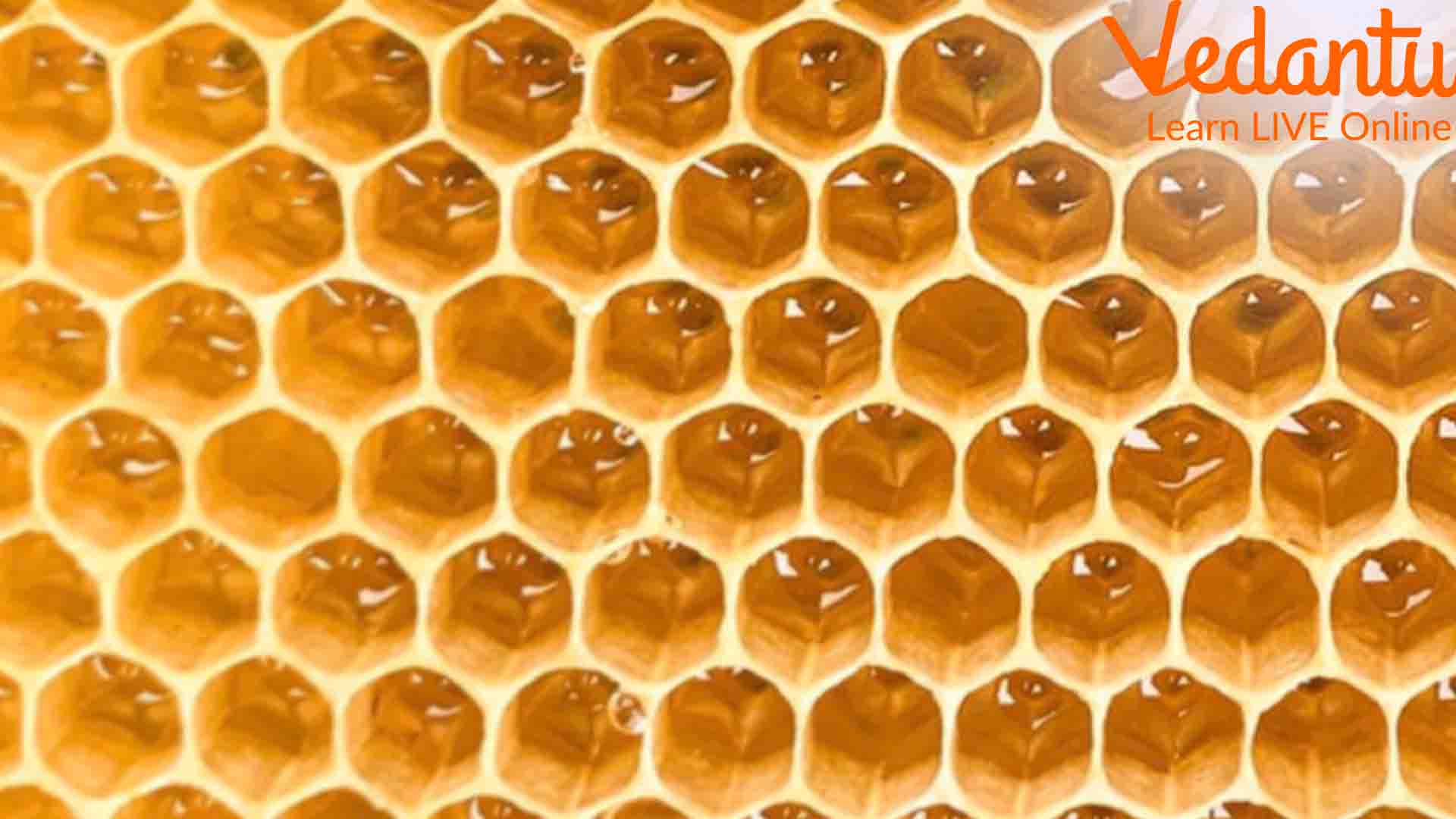How Honeybees Make a Honeycomb and Why?
Nature does not stop amazing us. The plants and animals with remarkable features make us think about how nature can be constructive. We have learnt so many things from nature and have developed our civilisation accordingly. We have learned to fly and make stronger infrastructure by following nature’s designs. One such design is the making of honeycombs.
We know how honeybees collect nectar from the flowers. Where do they deposit the nectar? What is the prime reason behind it? They make honeycombs as a nest to rear a new generation. A honeycomb serves as the home for the young ones. Let us find out how the worker honeybees make a comb.
What is a Honeycomb?
A honeycomb represents a specific structure. It is made of compartments of a hexagon pattern forming a big beehive. The beehive comprises hundreds of such compartments built with perfection. Every compartment has an equal shape resembling the other compartments.
Imagine stacking hexagons one above the other. If a hexagon becomes irregular in shape, the entire honeycomb will crumble down. The shape will become really unstable and will not be able to tolerate the external factors.
The prismatic hexagonal cells together make a beehive. It is a miracle of nature that the worker honeybees have found a mathematical solution to strength weight ratio. Scientifically speaking, a honeycomb structure contains hexagonal hollow prisms stacked one above the other forming a beehive. They are made of beeswax.
The hive is quite huge and has a good weight when loaded with honey. In every compartment, the queen honeybee lays an egg. The egg grows into a larva and consumes the honey deposited. It means that the beehive will eventually grow in weight. Due to the excellent strength-weight ratio, the hive remains as it is and does not even fall apart.

The Honeycomb Structure
What are Honeycombs Made of?
If you look closely, you will find that the prismatic hollow hexagonal cells are stacked parallel to each other. One line of honeycomb lies on the other one. This is how a beehive is built. As the bees are social animals, the name of the bee's home is called a hive.
These hexagonal compartments are made of beeswax. It is a natural wax produced by the eight glands present in each honeybee. The secretion hardens when it comes in contact with air. This is the construction material of beehives.
The compartments serve as quarters for rearing the larvae hatching from the eggs laid by the queen bee. It is packed with the nectar collected from the flowers. Hence, the answer to the question ‘where do bees store honey?’ is in these hexagonal compartments.
It takes almost 60,000 honeybees to construct a hive. Imagine all these bees working together without committing a mistake in shaping the hive. You will also be surprised to know that the honeybees use propolis, a type of bee glue collected from trees to stick the hexagonal compartments with each other. They also use this glue to line up the entry points of each compartment.
This same glue is also used as a remarkable natural sealant to hold the beehive structure together. The natural enemies of bees are wasps and robber bees. They predate honeybees. The sealant stops these enemies from entering the hive and acts as a natural defence.
How do Honeybees Make Honey?
There are three different types of bees in a swarm. Every swarm has a single queen bee, drone bees, and worker bees. The queen bee is responsible for laying fertilised eggs. It also lays unfertilised male eggs inside a prepared compartment.
The worker bees collect nectar and pollen grains and prepare the hive. They work throughout the entire day to make the hive and rest at night. They also collect and fill the compartments with nectar as the food source for the larvae.
The drone bees, on the other hand, do not have stingers and they do not even collect nectar. The prime function of the drone bees is to copulate with the queen bee. They do not even participate in making the nest.
The worker bees collect nectar from the flowers and store them in the compartment. The nectar is broken down into simple sugars by the additional enzymes produced by the honeybees. The sugar molecules are transformed into simpler ones to form the prime constituents of honey.
The worker bees continuously fan on the nectar and the compartment material helps to change it into sweet and thick honey. This dehydration process makes the consistency of the honey thicker. Once the hexagonal cells are filled with ripe honey, they are sealed. The honey serves as the energy for the bees.
Honey contains vitamins, amino acids, minerals, antioxidants, etc., apart from simple sugars. They use it for gaining energy, flying, maintaining the colony and performing daily activities. The pollens present in the honey also provide fatty acids, vitamins, and minerals to the honeybees. This is what honey contains and it acts as the prime food source of the entire hive.
Nature’s Miracle: Honeybees
We have understood how the honeybees make a hive. If you look at the pictures of honeycombs closely, you will find out how accurate the designs are. All the hexagonal cells are similar in shape and size. Imagine the working population of 60,000 following the same rhythm and maintaining the perfect texture throughout the hive. This is no less than a miracle.
The coordination and cooperation of the honeybees are remarkable and no less than exemplary. Such symmetry cannot be witnessed in any other nests made by other animals. So, this is how a honeycomb structure is made following the perfect geometrical symmetry and the ideal strength-weight ratio.







